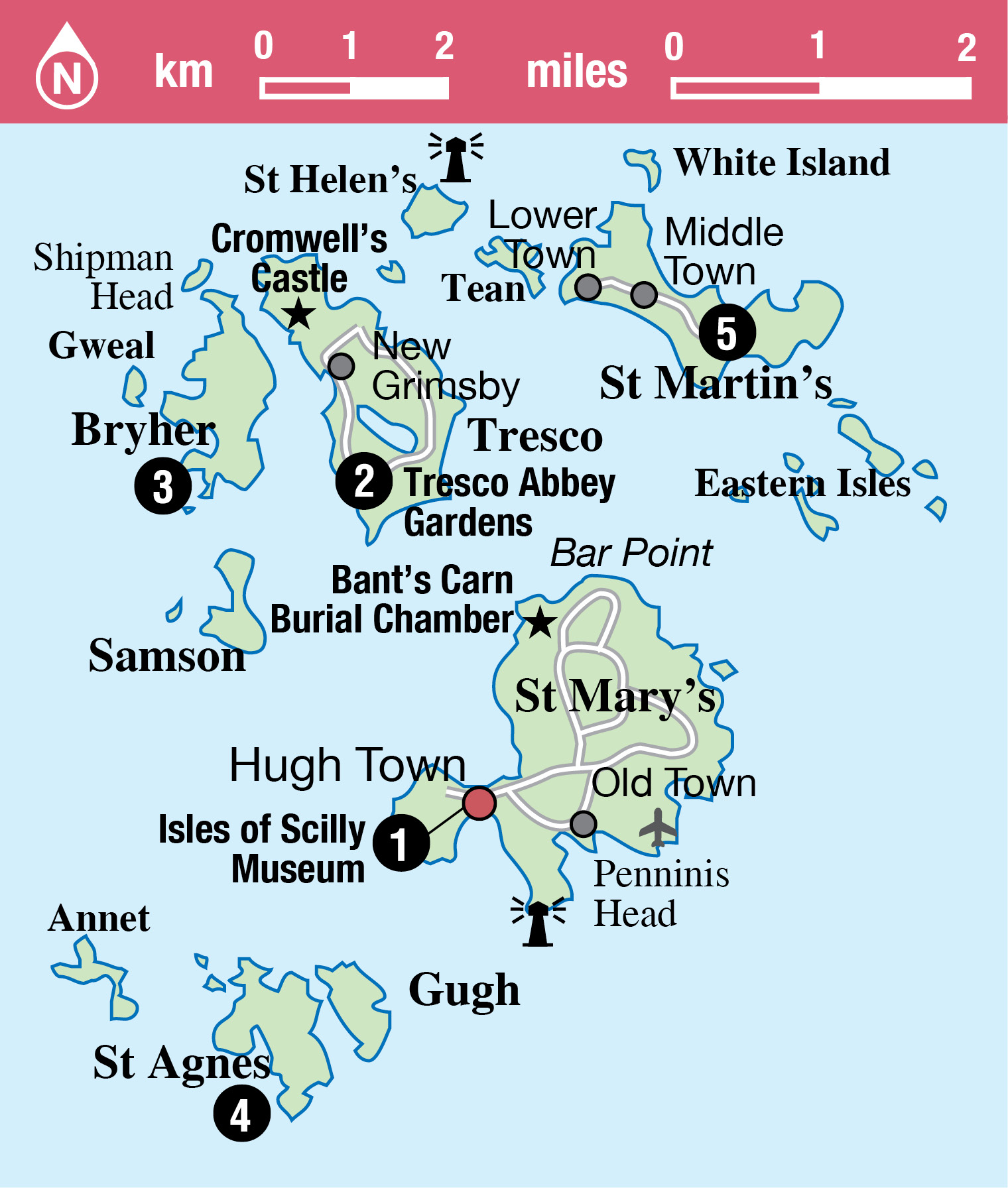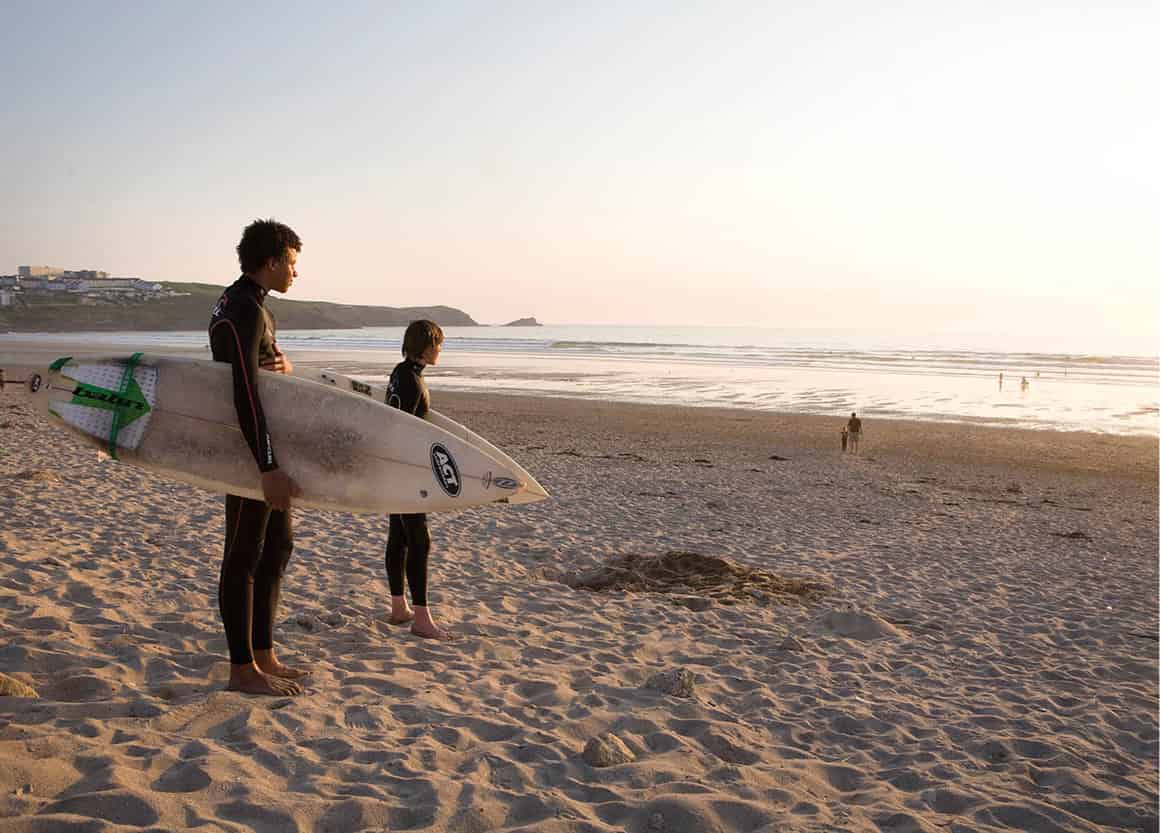This small cluster of islands 28 miles (45km) southwest of Land’s End comprises five inhabited islands (pop. 2,280) and over 100 smaller islands. The islands are tiny – the largest, St Mary’s, is barely 3 miles (5km) at its widest point. A mild climate means tropical plants and bulbs thrive; together with tourism these form the mainstay of the economy, although the flower industry is declining. The islands can be equally magical in bad weather. In winter they face the full force of the Atlantic. For details of how to get here, click here.
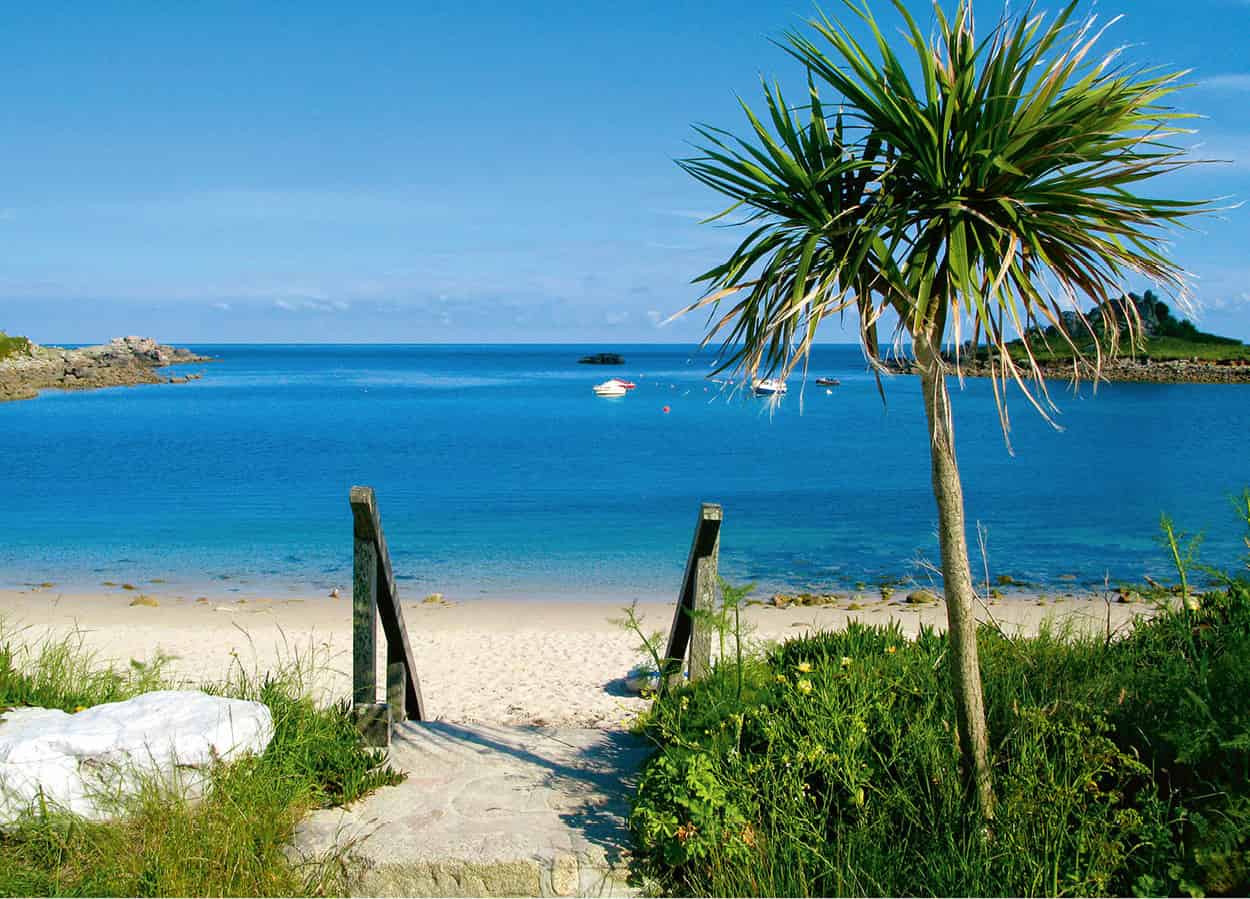
St Mary’s beach
Fotolia
Myth and Reality
Steeped in myth and legend, the islands have been associated with the Arthurian Lyonesse, the Atlantis of the Greeks and the Cassiterides (tin islands) of the Phoenicians. What is certain is that they have been inhabited for at least 4,000 years, as countless Bronze Age burial mounds testify.
For much of their history, the islanders had to scratch a living from anything the sea had to offer, including shipwrecks. Prosperity only arrived in 1834 when Augustus Smith obtained the lease of the islands. He made social reforms and encouraged shipbuilding.
St Mary’s
Shipyards once occupied the beach adjacent to the quayside at St Mary’s, the first port of call for visitors arriving by sea. It is only a short walk into the Scillies’ main town, Hugh Town, which straddles the island at its narrowest point. You could visit the Mermaid pub before continuing up the road on the right, through the Garrison Gate to Star Castle. Now a hotel, the castle was built in 1593 as protection against pirates and possible invasion by the Spanish. In 1646, during the Civil War, the castle was a refuge for the Prince of Wales (Charles II) and his retinue after their defeat at Bodmin.
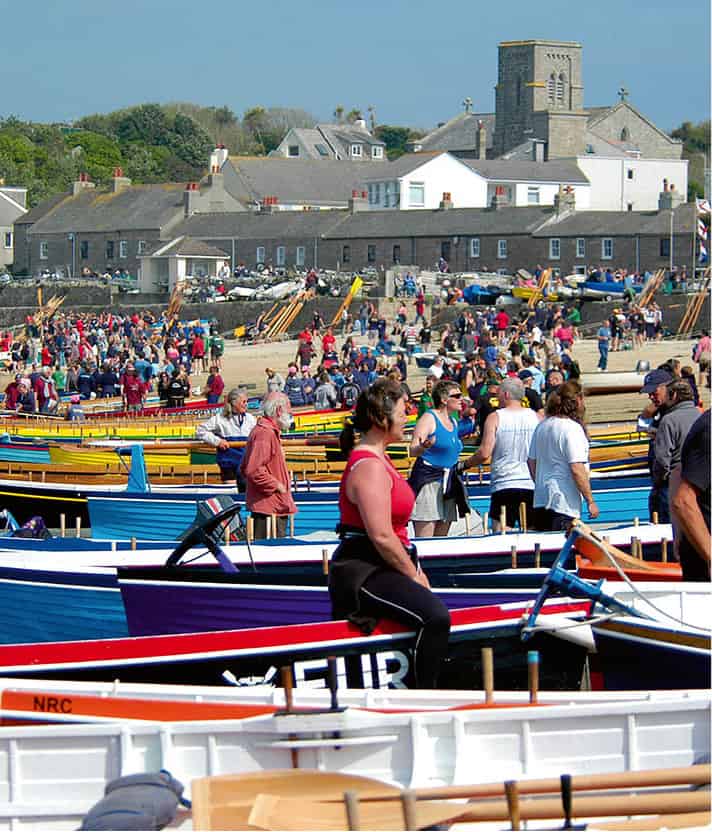
World Pilot Gig Championship, Hugh Town.
Alamy
Scilly Facts
Owing to the Scillonian people’s assistance when the German ocean liner Schiller was shipwrecked nearby in 1875, orders were given during the two World Wars to spare the islands from German attack.
St Mary’s is the final resting place of former British prime minister Harold Wilson, who was very fond of the islands.
The gigs in the Isles of Scilly Museum can be seen in action by summer visitors; they race between the Tresco Channel and St Mary’s every Wednesday and Friday evening in the gig races.
Isles of Scilly Museum
Continue through Hugh Town into Church Street, where the Isles of Scilly Museum 1 [map] (www.iosmuseum.org; Mon–Sat, Easter–Sept 10am–4.30pm, Oct–Easter 10am–noon) offers an interesting insight into life on the islands. Exhibits range from Bronze and Iron Age artefacts to remnants of shipwrecks. The museum’s centrepiece is a restored pilot boat (gig). A natural history section highlights species that live here for at least part of the year. The puffin and the Atlantic seal are popular residents of the Western Rocks.
St Mary’s has some magnificent coastline, nowhere more than at Penninis Head on the south coast. There is also much evidence of ancient history on the island, including Bant’s Carn Burial Chamber.
Tresco
Depending on the tide, visitors to the paradise island of Tresco usually arrive at New Grimsby harbour. A long promenade leads around the harbour, where the road turns left uphill to Old Grimsby. Most visitors continue straight on, following signs to Tresco Abbey Gardens 2 [map] (www.tresco.co.uk/enjoying/abbey-garden; daily 10am–4pm). Laid out in the 19th century by Augustus Smith, the gardens contain rare plants from 80 countries, ranging from Brazil to New Zealand and Burma to South Africa, many brought back by ships’ captains. In the gardens is the Figurehead Valhalla, a museum of figureheads culled from shipwrecks.
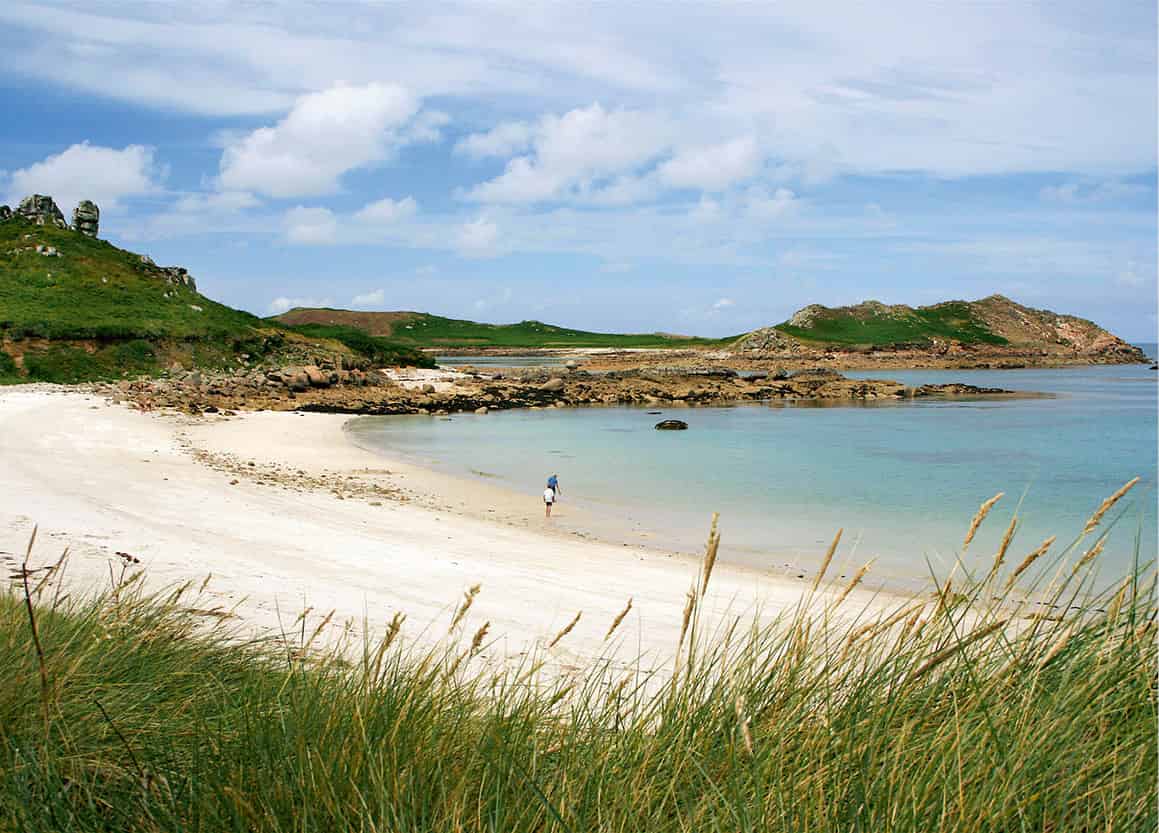
Tresco is dotted with almost deserted white-sand beaches.
Scilly Isles TB
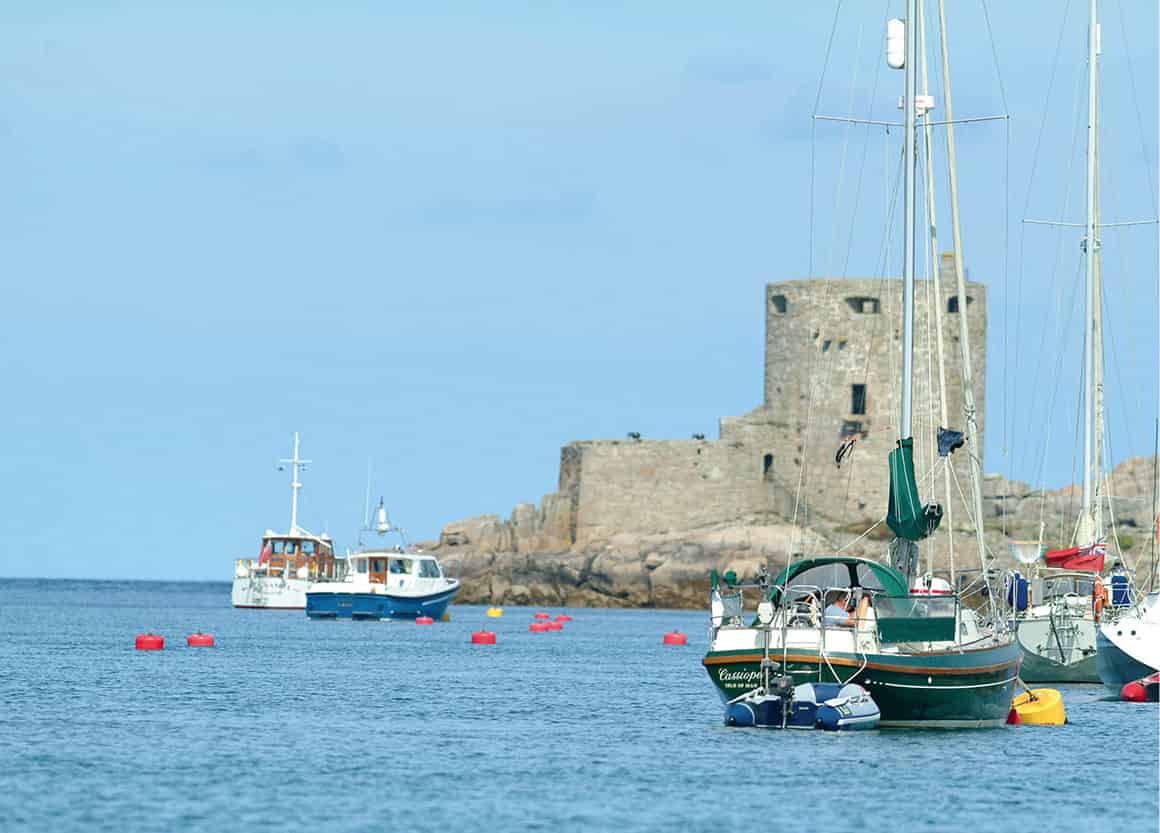
Cromwell’s Castle on Tresco, built beneath King Charles’ Castle.
Scilly Isles TB
The southern end of Tresco is flanked by a series of beautiful, empty beaches. Continue along the east coast past Pentle Bay and the Old Blockhouse to Old Grimsby, from where it is possible to explore the rugged northern end of the island, whose features include Pipers’ Hole, a cave with a small underground lake. On the west coast the most distinctive man-made feature is the tower of Cromwell’s Castle, built on the promontory beneath the older King Charles’ Castle in 1651.
Bryher
Just opposite Tresco is Bryher 3 [map], the smallest of the five inhabited islands, with a population of around 80. The settled part of the island starts at the church by the main quay and winds uphill, dropping down to the coast once more at the Fraggle Rock Café (for more information, click here). A path leads up to the northern tip, offering beautiful walks over the downs. The rocky headland of Shipman Head is separated from the island by a narrow cleft; so having visited Hell Bay, which even on a day of moderate swell offers spectacular views of the sea lashing against the rocks, walkers can continue down the west coast.
The most beautiful feature at the island’s southern end, Rushy Bay overlooks uninhabited Samson island. Behind the bay is Samson Hill, from which there are superb views.
St Agnes and St Martin’s
St Agnes 4 [map] is the most southwesterly community in the whole of the British Isles. Principal industries are fishing and flower growing. At low tide you can walk across a sandbar to the small island of Gugh. Near the main jetty is the Turk’s Head, renowned for good food and fine views. In the centre of the island, and visible from afar, is a disused, 17th-century, coal-burning lighthouse. An even more striking feature, the red-and-white-striped Daymark dominates the easternmost inhabited island of St Martin’s 5 [map], popular for its magnificent beaches.
Eating Out
St Mary’s
Bell Rock Hotel Restaurant
Church Street; tel: 01720-422 575; www.bellrockhotel.co.uk; daily dinner only.
A cosy restaurant using local produce whenever possible, such as free-range Scillonian eggs, Cornish cheeses and award-winning sausages. ££
Bishop and Wolf
Hugh Town; tel: 01720-422 771; daily 11am–11pm, food served noon–2pm, 6–8pm
Good pub food and drink in one of the oldest buildings in town. £
Juliet’s Garden
Seaways Flower Farm, Portloo Beach; tel: 01720-422 228; www.julietsgardenrestaurant.co.uk; daily lunch and dinner.
Views from the terrace over the harbour are breathtaking and the food is extraordinary (especially Juliet’s signature dish – lobster and crab omelette). A converted barn loft provides the indoor seating. ££.
Bryher
tel: 01720-422 222; daily lunch and dinner, reduced hours in winter.
England’s most westerly pub, Fraggle Rock provides drinks, snacks (including the famous crab double-decker sandwich) and evening meals. £
St Martin’s
Seven Stones Inn
Lower Town; tel: 01720-423 777; daily lunch and dinner
Family-run inn taking pride in serving a good pint and exceptional pub grub, which arguably has the best pub view in the world. £
